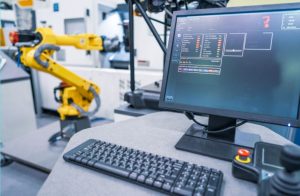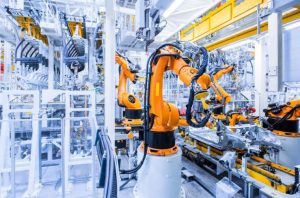Table of Contents
If you read the newspaper or go through social media platforms, you will see that there is a trend related to automation. Now, this has spread widespread panic among workers as they feel; that they will be replaced by robots in the near future. But that is not the case, as is evident from the blog below.
The Scenario Now

Our political and social stability is being replaced by robotic ambitions as a result of technological advancements. Artificial Intelligence, Information Technology, and robots are considered to be a revolute world once again in the twenty-first century, following the industrial revolution of the twentieth century.
The world’s developed and emerging countries are all working to increase productivity and labour-power. Labourers are the backbone of any country and contribute to its long-term development. We are replacing our backbone with artificial intelligence as we move towards progress and sustainability.
China is at the top of the list of countries working to replace human labour with robots. The country is the world’s leading robots manufacturer. Scientists were not alone in their efforts; the government was also actively involved in the reform process.
Stages of Transition from Labor Force to Robot

It’s not always simple to explain this to employees who have been hearing for years that they would be replaced by a robot. Bringing robots into the workplace can be a challenging and dynamic process. While it may appear that workers’ employment is in jeopardy at first, the final effect is a warehouse full of happier, healthier humans.
1st Stage: Fear
The first stage is usually fear when a corporation decides on a robotic solution and informs the personnel who will be engaging with the robots. Given the public perception of robots, this is an entirely reasonable attitude. Most of your businesses, on the other hand, take a proactive approach to help their staff understand why robots are being introduced. And how working with robots would improve their careers.
Human-machine interaction only works if both parties accept each other, as per Denis Niezgoda, DHL’s Robotics Accelerator Lead in the Netherlands. He further mentioned that, but no technology will work out if the workforce is not receptive to the technology.
2nd Stage: Apprehension
The anxiety of losing a job is replaced by stage two, uneasiness, once the robots arrive. Workers are aware that their positions are safe, but that there will be considerable changes in the way they are managed. “How do I work with it?” is a common query about robots. “Am I even competent to use this?” one might wonder.
With their natural simplicity, Fetch Robotics’ fleet of autonomous mobile robots helped alleviate this stage of trepidation, as per the workers. Even the most dubious employees gradually see that the robots are collaborative. Robots are useless without people to work with them, and employees who work with robots are far more valuable than they were previously.
3rd Stage: Curiosity
Curiosity is, of course, the third stage. It happens just a few hours after the robots are introduced to the warehouse for the first time. There is an exploration phase after the personnel grasp what the robots are supposed to perform and how to operate them. It’s interesting to watch what types of things the robots will react to because they’re entirely autonomous but operate without any physical control infrastructure.
The most typical test is to leap in front of them and see if they will stop (they do). People also enjoy playing with barriers, which are frequently used to obstruct a robot’s progress. If you write an essay on the same topic, you can take pointers from this blog. And if you require essay help, you should hire professional experts.
4th Stage: Tolerance
The next stage is tolerance, which occurs after the novelty wears off (which can take anywhere from a few days to a few weeks). It also subsides when the staff become acclimated to the robots’ behaviour and functionality. As people begin to use the robots more and see them as tools, the tolerance stage correlates with gains in both utilization rates and productivity.
The employees become familiar with the tool. Employees that use the robots on a daily basis, frequently have suggestions for how they might be used more successfully. They share opinions on how the robots can be used in completely different ways, just like they do with any other flexible equipment.
5th Stage: Satisfaction
The robots are no longer just tools, but coworkers who are an integral role in the warehouse at the end of the process. For the humans who work with them, this improves the job experience. When this level is achieved, people begin to anthropomorphize the robots. They ascribe human-like personalities or emotions to select robots that stand out from the rest.
Although each Freight robot is made up of the same hardware and runs the same software, their autonomy enables people to consider them as individuals. The robots at RK Logistics are all named after Marvel superheroes.
Robots as Colleagues

Employees gradually understand how much better their jobs are because of the robots. Aside from allowing people to focus on more fascinating and mental brain-challenging activities, robots also take over much of the physically demanding jobs. These involve lifting, carrying, and walking. Workers feel better at the end of the day and are more likely to be healthy in the long run.
This is Fetch Robotics’ goal: robots as collaborators rather than rivals, and robots that operate alongside people rather than in place of them. There are simple economic reasons for this that are sometimes missed in discussions. Robots are increasingly required to help compensate for labour shortages that are becoming increasingly acute in both the United States and Europe. Hopefully, you have a brief understanding of the scenario. If you feel that you are short on time, you can take the help of essay typers.

